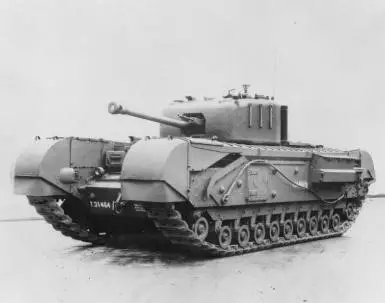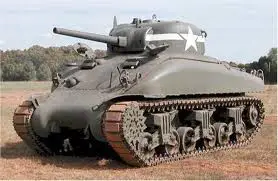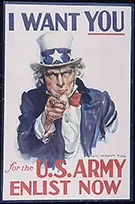World War II Tanks
World War II lasted from September 1, 1939 until September 2, 1945. Over 30 countries took part in a war that was fought in the Pacific, Europe, North Africa, and Asia and involved over 100 million people. Because of the large extent of people and places involved in the war, it was called a Total War. Many technological inventions and ideas emerged during this war. One of the military tools that advanced was the tank.


The History of the Tank
The very first tank was invented in 1915 and began to be used in World War I. It was named Little Willie. Little Willie was made in England and it weighed an amazing14 tons. It was slow and the engine became overheated quickly, but it was a start and soon faster and stronger tanks were created. Most of these advanced tanks were created during World War II

What is a Tank?
A tank is a vehicle, such as a car, that is protected with thick armor. It has a large gun and is mobile, so that it can be used in front-line battles. The large gun, called a Commander’s MG, can move around in different directions for attack. The crew is protected by the armor, and there are two large tracks that move the vehicle instead of wheels. The tracks help the vehicle to move to where it is needed and it rough terrains such as mountains. The soldiers are in the large vehicle and fire from openings that are called gun tanks.
The Parts of a Tank
- Optical Periscope
- Gun Mantlet
- Co-axial gun
- Fume extractor
- Main gun
- Driver’s optics
- Driver’s hatch
- Glacis plate
- Track
- Machine Gun ammunition
- Commander’s GM
- Turret
- Turret Ring
- Hull
- Engine air intake
- Engine compartment
- Armored skirt
- Drive sprocket
- Link
- Road wheel


How did Tanks Change During World War II?
When tanks were first invented they were big, bulky, and moved slowly. They often got stuck in sand or muddy areas, consequently stranding the soldiers inside of them. The tanks used in World War II were better in several ways.
- They were able to move quicker
- They had more protective armor
- The guns were more powerful
- The tracks were able to move better without getting stuck in places
- And some tanks were even amphibious, which means they could be used from land to sea
The Allies: Britain, China, France, The Soviet Union, the United States, Belgium, Brazil, Australia, and many other minor countries and the Axis Powers: Germany, Italy, Japan, Hungary, Romania, and Bulgaria both had tanks that underwent many modern changes.

Some of the Many Tanks of World War II
The Panther: A German Tank
- Introduced in battle in 1943
- Used until 1945
- Medium sized
- Known for strong firepower and superior mobility
- Considered one of the top designs in World War II
- Used by other nations in battle after World War II
M4 Sherman: United States Tank
- Used by all Allies
- The main gun was extremely accurate
- 50,000 produced during WWII
- Medium Sized
Sherman Firefly: British Tank
- Similar to the US M4 Sherman
- Powerful anti-tank gun called the British 17 pounder
- Could defeat the Panther and the Tiger tanks
Iosif Stalin Tank: Soviet Union Tank
- Named after Joseph Stalin
- Thick armor
- Could defeat the Panther and the Tiger
- Also called the IS tank
Tiger I: German Tank
- A heavy tank
- Developed in 1942
- Had a 88mm gun
- Effective against air and ground attacks
- Used in all German battlefront conflicts
Tiger II: German Tank
- A heavy tank
- Powerful gun and thick armor
- Superior to all Allies tanks
- Underpowered engine


As each tank was created and possible mistakes and flaws were discovered, new tanks were then developed. An example of this is when the Germans created the Tiger II after analyzing the problems the Tiger I had. These cutting edge technological advances were never seen before World War II.
Our modern day cars have features that were first discovered, as World War II tanks were improved. Car parts and functions such as tires, steering, and the materials on cars all began with the inventions of tanks in World War II. Civilian life, nonmilitary life, is not the only place where World War II made impacts. Better military tanks and armor were created because of the desire for countries to win and then end this war. The history of World War tanks and the impacts live on today, long after the signing of the peace treaty to end the war in 1945.



